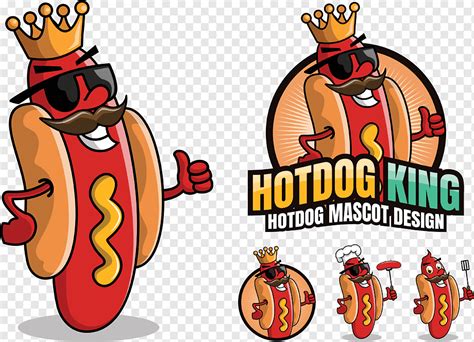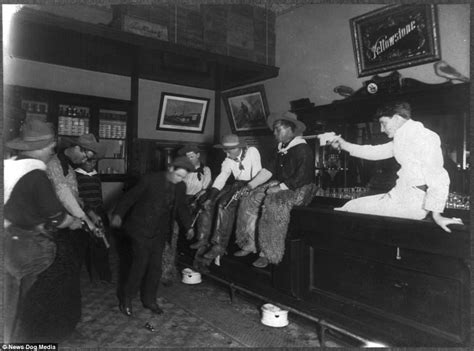
New York has been officially declared the top state for hot dog consumption in the United States, consuming over 36 million hot dogs in the past year, according to recent data from the National Hot Dog and Sausage Council (NHDSC). This figure solidifies New York’s position as the nation’s premier hot dog-loving state, surpassing other states by a significant margin.
The NHDSC, the leading authority on all things hot dogs and sausages, compiled the data based on sales figures and consumption rates across the country. Their findings reveal a substantial appetite for this classic American food in the Empire State, underscoring its cultural significance and popularity among New Yorkers. “New York’s love for hot dogs is undeniable,” said a spokesperson for the NHDSC. “The numbers speak for themselves. New Yorkers have a deep appreciation for this iconic food, whether enjoyed from a street vendor, at a baseball game, or at a backyard barbecue.”
The report highlights the enduring appeal of hot dogs, attributing their popularity to their affordability, convenience, and versatility. Hot dogs can be customized with a wide range of toppings, making them a favorite choice for people of all ages and tastes. From classic combinations like mustard and ketchup to more adventurous options like chili, onions, and sauerkraut, the possibilities are endless.
The hot dog’s roots in New York City run deep, dating back to the late 19th century when German immigrants began selling sausages from pushcarts on the streets of Manhattan. These early hot dogs quickly gained popularity among the working class, becoming a staple of the city’s culinary landscape. Over time, hot dog vendors became ubiquitous throughout the city, offering a quick and affordable meal for busy New Yorkers on the go.
Today, New York City boasts a vibrant hot dog culture, with countless vendors and restaurants serving up their own unique takes on this classic food. From the iconic Sabrett carts that dot the streets to upscale restaurants that offer gourmet hot dog creations, there’s a hot dog for every palate and budget in the Big Apple.
The NHDSC’s data also sheds light on regional preferences when it comes to hot dog toppings. While mustard and ketchup remain the most popular choices nationwide, New Yorkers have a particular fondness for onions and relish. Other popular toppings in the state include sauerkraut, chili, and cheese.
Beyond New York City, hot dogs are enjoyed throughout the state, from the bustling urban centers of Long Island to the scenic countryside of upstate New York. Whether at a baseball game, a county fair, or a backyard barbecue, hot dogs are a ubiquitous sight in the Empire State.
The economic impact of the hot dog industry in New York is also significant. Hot dog vendors and restaurants contribute to the state’s economy through sales, employment, and tax revenue. The NHDSC estimates that the hot dog industry generates millions of dollars in economic activity in New York each year.
The cultural significance of hot dogs in New York extends beyond their culinary appeal. Hot dogs are often associated with quintessential New York experiences, such as attending a Yankees or Mets game, strolling through Central Park, or visiting Coney Island. For many New Yorkers, a hot dog is more than just a food; it’s a symbol of the city’s vibrant culture and rich history.
The NHDSC’s report also highlights the nutritional aspects of hot dogs. While often considered an indulgent treat, hot dogs can be part of a balanced diet when consumed in moderation. They are a source of protein and can be paired with healthy toppings like vegetables and whole-grain buns.
The organization encourages consumers to be mindful of portion sizes and to choose hot dogs that are lower in sodium and fat. They also provide resources and information on hot dog safety and preparation.
The popularity of hot dogs in New York is not limited to traditional beef or pork varieties. In recent years, there has been a growing demand for alternative hot dogs made from chicken, turkey, or even plant-based ingredients. These options cater to consumers who are looking for healthier or more sustainable choices.
The rise of gourmet hot dogs has also contributed to the enduring appeal of this classic food. Chefs and restaurateurs are experimenting with new and innovative flavor combinations, using high-quality ingredients and creative toppings to elevate the hot dog experience.
From artisanal sausages to homemade condiments, gourmet hot dogs offer a sophisticated twist on a familiar favorite. These creations can be found at upscale restaurants, food festivals, and even some street vendors.
The hot dog’s versatility also makes it a popular choice for home cooks. With a few simple ingredients and a grill or stovetop, anyone can create a delicious and satisfying hot dog meal.
Whether enjoyed at a ballgame, a backyard barbecue, or a gourmet restaurant, hot dogs remain a beloved food in New York and across the country. Their affordability, convenience, and versatility make them a perennial favorite for people of all ages and tastes.
The NHDSC plans to continue tracking hot dog consumption trends in the United States, providing valuable insights into the nation’s culinary preferences. Their data helps to inform consumers, businesses, and policymakers about the economic and cultural significance of this iconic food.
New York’s reign as the hot dog king of the United States is a testament to the enduring appeal of this classic American food. As long as there are baseball games to attend, street corners to explore, and barbecues to host, hot dogs will continue to be a beloved staple in the Empire State.
Frequently Asked Questions (FAQ)
1. How many hot dogs did New York consume in the past year?
According to the National Hot Dog and Sausage Council (NHDSC), New York consumed over 36 million hot dogs in the past year, making it the state with the highest hot dog consumption in the United States.
2. What factors contribute to the popularity of hot dogs in New York?
The popularity of hot dogs in New York is attributed to several factors, including their affordability, convenience, versatility, and deep cultural roots in the city. They are a staple food enjoyed from street vendors to baseball games, offering a quick and customizable meal option.
3. What are some popular hot dog toppings in New York?
While mustard and ketchup remain popular nationwide, New Yorkers show a particular fondness for onions and relish. Other common toppings include sauerkraut, chili, and cheese. Regional variations also exist, with some areas favoring specific combinations.
4. What is the economic impact of the hot dog industry in New York?
The hot dog industry in New York contributes significantly to the state’s economy. Hot dog vendors and restaurants generate millions of dollars in sales, employment opportunities, and tax revenue annually.
5. Are there healthier alternatives to traditional beef or pork hot dogs?
Yes, there is a growing demand for alternative hot dogs made from chicken, turkey, or plant-based ingredients. These options cater to consumers seeking healthier or more sustainable choices while still enjoying the classic hot dog experience.
Expanded Context and Analysis
The news that New York leads the United States in hot dog consumption isn’t entirely surprising given the state’s, and particularly New York City’s, historical and cultural association with the food. To fully appreciate this statistic, it’s crucial to delve into the history of hot dogs in America, their evolution, and their ongoing relevance.
A Brief History of Hot Dogs in America
The hot dog’s journey to becoming an American icon began in the late 19th century with German immigrants who brought their sausage-making traditions to the United States. These sausages, often called “dachshund sausages” due to their shape, were initially sold from pushcarts in New York City.
The exact origin of the hot dog’s name is debated. One popular theory suggests that a cartoonist, unable to spell “dachshund,” simply drew a picture of the sausage in a bun and labeled it “hot dog.” Regardless of the name’s etymology, the hot dog quickly gained popularity as an affordable and convenient meal for working-class Americans.
By the early 20th century, hot dog stands and vendors were a common sight in cities across the country. Coney Island, in particular, became a hot dog mecca, with Nathan’s Famous opening its doors in 1916 and quickly becoming a landmark. The annual Nathan’s Famous Hot Dog Eating Contest, held every Fourth of July, further cemented the hot dog’s place in American culture.
The Hot Dog in New York City: A Culinary and Cultural Staple
In New York City, the hot dog evolved from a simple sausage in a bun to a highly customizable culinary experience. Street vendors offered a variety of toppings, from the classic mustard and ketchup to more regional specialties like onions in tomato sauce.
The Sabrett hot dog, with its distinctive blue and yellow umbrella-covered carts, became an iconic symbol of New York City. These vendors, along with countless others, provide a quick and affordable meal for busy New Yorkers on the go.
The city’s diverse culinary scene also influenced the hot dog, with chefs and restaurants experimenting with new and innovative flavor combinations. Gourmet hot dogs, featuring artisanal sausages, homemade condiments, and unique toppings, emerged as a popular trend.
Beyond the Bun: The Cultural Significance of Hot Dogs
The hot dog’s cultural significance extends far beyond its culinary appeal. It is often associated with quintessential American experiences, such as attending a baseball game, visiting a county fair, or enjoying a backyard barbecue.
In New York, the hot dog is intertwined with the city’s identity. It is a food that is accessible to everyone, regardless of their socioeconomic status. It is a symbol of the city’s vibrant street food culture and its rich immigrant history.
For many New Yorkers, a hot dog is more than just a meal; it is a nostalgic reminder of childhood memories, family gatherings, and cherished traditions. It is a taste of home, no matter where they are in the world.
The Nutritional Considerations
While hot dogs are often viewed as an indulgent treat, it’s important to consider their nutritional profile. A typical hot dog contains protein, but it can also be high in sodium, fat, and processed ingredients.
However, consumers can make healthier choices by opting for lower-sodium and lower-fat varieties. They can also pair their hot dogs with healthy toppings like vegetables and whole-grain buns.
The NHDSC encourages consumers to be mindful of portion sizes and to choose hot dogs that fit into a balanced diet. They also provide resources and information on hot dog safety and preparation.
The Rise of Alternative Hot Dogs
In recent years, there has been a growing demand for alternative hot dogs made from chicken, turkey, or plant-based ingredients. These options cater to consumers who are looking for healthier or more sustainable choices.
Chicken and turkey hot dogs typically have lower fat content than traditional beef or pork varieties. Plant-based hot dogs, made from ingredients like soy or vegetables, offer a vegan and vegetarian-friendly alternative.
These alternative hot dogs provide consumers with more options to enjoy the classic hot dog experience while aligning with their dietary preferences and values.
The Gourmet Hot Dog Revolution
The gourmet hot dog trend has elevated the hot dog from a simple street food to a sophisticated culinary creation. Chefs and restaurateurs are experimenting with new and innovative flavor combinations, using high-quality ingredients and creative toppings.
Gourmet hot dogs can feature artisanal sausages made from premium meats, homemade condiments like gourmet mustards and relishes, and unique toppings like caramelized onions, truffle aioli, and exotic cheeses.
These creations can be found at upscale restaurants, food festivals, and even some street vendors, offering a more refined and elevated hot dog experience.
The Economic Impact Revisited
The NHDSC’s data highlighting New York’s high hot dog consumption underscores the economic significance of this industry. The sale of over 36 million hot dogs translates into substantial revenue for vendors, restaurants, and suppliers throughout the state.
This revenue supports jobs in the food service industry, manufacturing, and transportation. It also generates tax revenue for local and state governments, contributing to the overall economic well-being of New York.
The hot dog industry’s economic impact extends beyond direct sales. It also supports related industries, such as bun bakeries, condiment manufacturers, and food packaging companies.
The Future of Hot Dogs in New York
The hot dog’s enduring popularity in New York suggests that it will remain a culinary and cultural staple for years to come. The city’s diverse culinary scene and its residents’ love for street food will continue to fuel the demand for hot dogs.
The rise of alternative hot dogs and gourmet creations will likely continue, offering consumers more options to enjoy this classic food. As long as there are baseball games to attend, street corners to explore, and barbecues to host, hot dogs will remain a beloved part of New York’s identity.
The NHDSC’s ongoing research and data collection will continue to provide valuable insights into hot dog consumption trends, helping businesses and consumers make informed decisions about this iconic food. New York’s continued reign as the hot dog king is a testament to the enduring appeal of this simple yet satisfying meal.
The hot dog scene is constantly evolving, adapting to changing tastes and preferences. Innovation in toppings, bread types, and even the cooking methods keep the hot dog relevant and exciting for consumers. The use of locally sourced ingredients and sustainable practices is also becoming increasingly important, reflecting a broader trend in the food industry. This continuous adaptation ensures that the hot dog remains a popular and beloved food for generations to come. The creativity and entrepreneurial spirit of New York’s culinary scene contribute significantly to this evolution, constantly pushing the boundaries of what a hot dog can be.









